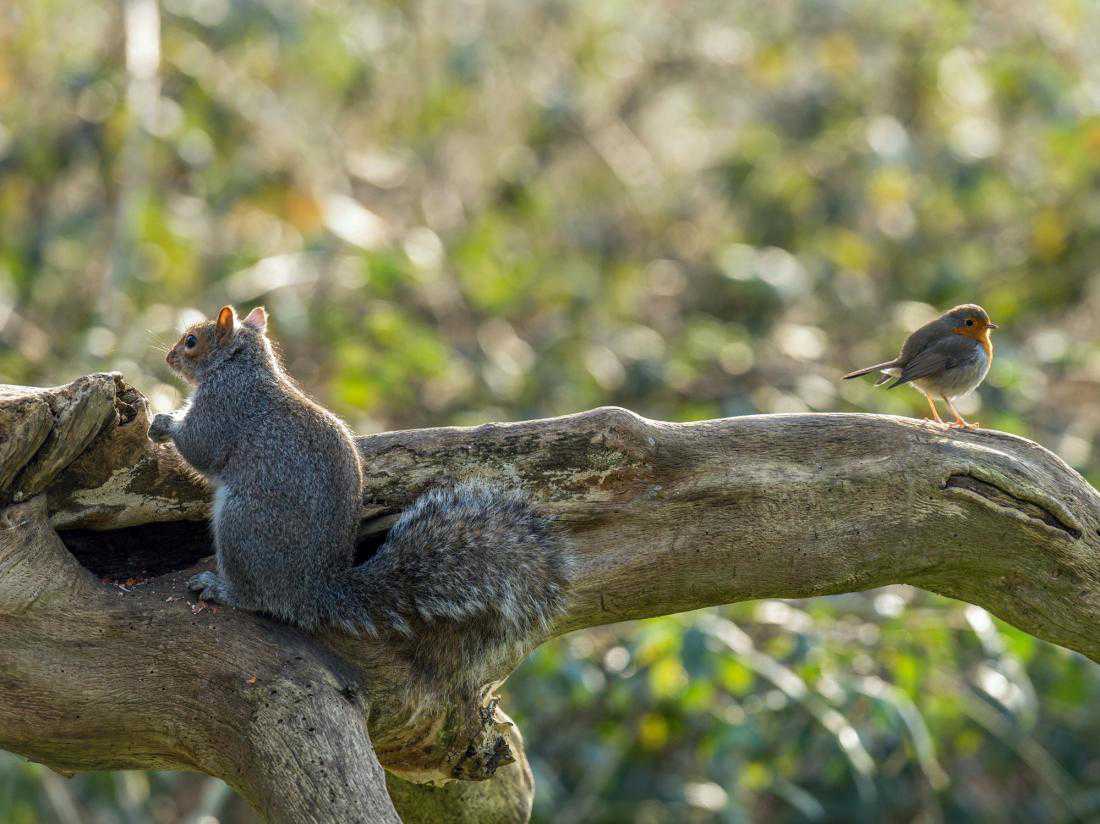How birds let squirrels know when it's safe to relax
15 September, 2019

A new study has concluded that following a threat, squirrels in the wild use the ambient chatter of birds to help determine when the danger has passed.
Nature is an unfriendly place for small animals.
For this reason, many have evolved to use information in the environment as a warning system.
For example, some animals have learned to listen to the alarm calls of other species for clues.
As well as increasing their chances of survival, recognizing the alarms of other animals helps species reduce the energy they spend on unnecessary vigilance behavior.
Alarm signals have a wealth of studies behind them. What they have found is that one member of a species will produce a specific sound, and nearby animals will run and hide.
Some animals also use "all clear" signals to let other members of the species know that they are safe. However, there has been much less research into this type of signal.
Earlier work focused on more closely related animals. For instance, one study found that some woodpeckers use the non-alarm calls of other species as a signal that all is well.
A recent study in PLOS One, however, looked at two very different animals: The team investigated how non-alarm birdsong influences squirrel behavior.
Squirrels and songbirds
Squirrels tend to occupy similar environments to many songbirds but do not follow them or interact with them. As the authors write, "they do not have 'tight' ecological relationships with them."
The researchers theorized that because birds only "chatter" as a group when threat levels are low, squirrels might identify this as a cue to reduce levels of vigilance behavior.
Research has also shown that squirrels react to the alarm calls of certain species, including American robins and black-capped chickadees, but no studies have looked at responses to non-alarm bird chatter.
To investigate, the researchers studied Eastern gray squirrels (Sciurus carolinensis) living wild in Ohio. To elicit a fear response, they played a recording of the red-tailed hawk (Buteo jamaicensis), a common threat to squirrels and birds alike.
Thirty seconds after playing the hawk call, the researchers played either a 3-minute recording of songbird chatter or 3 minutes of ambient sounds with no bird calls.
The scientists observed the squirrels' behavior before the hawk call and for the duration of the 3-minute recording.
In all, the researchers analyzed data from 54 individual squirrels. They moved to a new location after each trial to ensure that they did not test the same squirrel more than once.
The power of chatter
As the researchers expected, the sound of a red-tailed hawk sparked vigilance behaviors, such as fleeing, looking up, or freezing.
However, the squirrels that heard bird chatter following the hawk call carried out fewer fear responses and returned to their foraging activity more quickly than those that heard ambient noise after the hawk. The study authors summarize:
"Gray squirrels exposed to bird chatter expressed significantly lower and more rapidly declining levels of vigilance behavior than those exposed to ambient noise, suggesting they used information contained in bird chatter as a cue of safety."
These results are an interesting addition to the current understanding of how different species listen to and act upon the sounds of nonrelated species. The authors write:
"We knew that squirrels eavesdropped on the alarm calls of some bird species, but we were excited to find that they also eavesdrop on non-alarm sounds that indicate the birds feel relatively safe. Perhaps in some circumstances, cues of safety could be as important as cues of danger."
